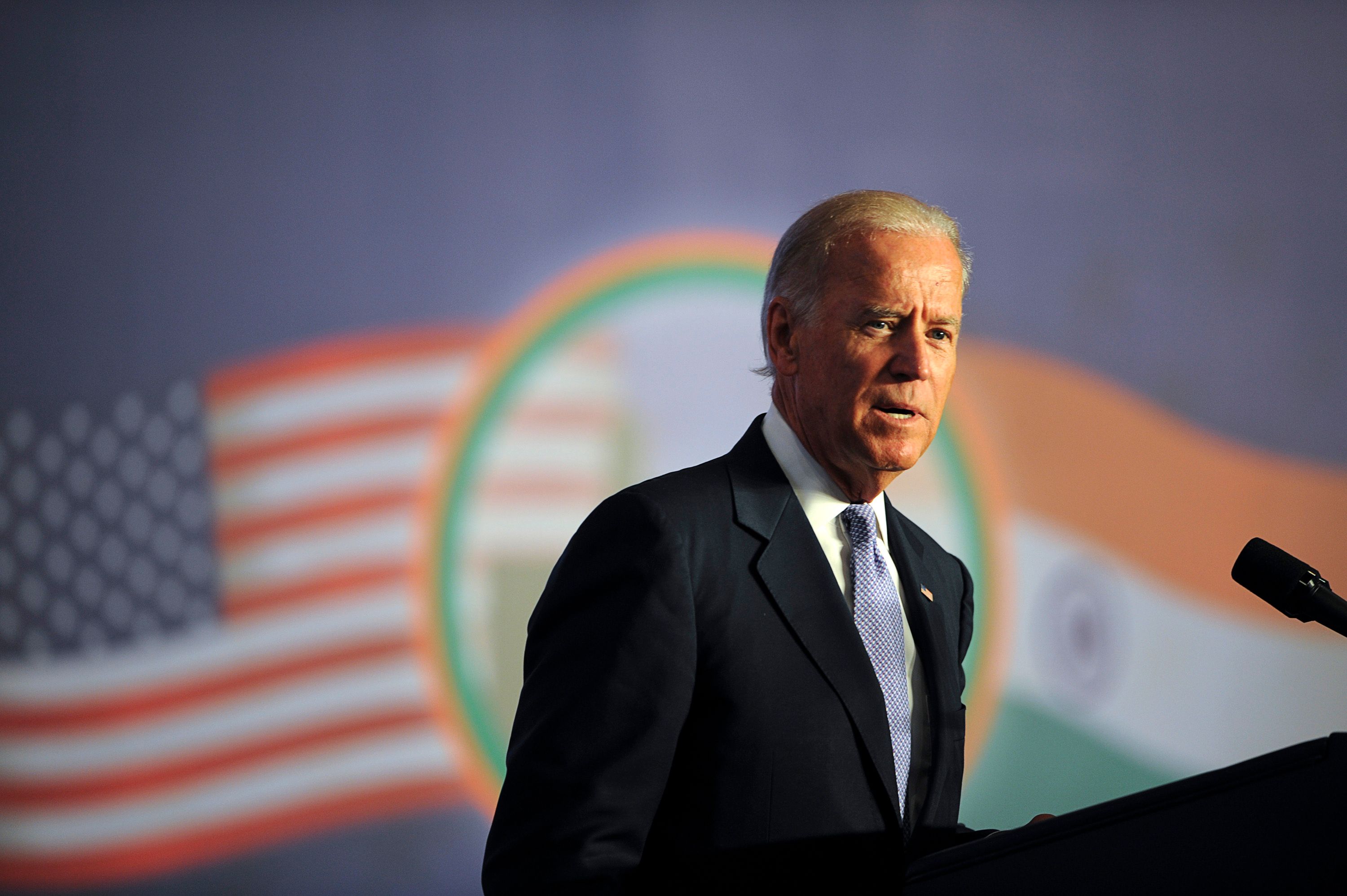The Indo-Pacific Region After Trump: Competition not Confrontation

Joe Biden and the Democratic Party did not pay much attention to the Indo-Pacific during the 2020 electoral campaign. Thus, the change in the U.S. administration raised questions about the continuation of the Indo-Pacific strategy pursued by Donald Trump. Hence, for example, the Chinese daily Global Times (published by the CCP) expressed the hope that the new U.S. government would abandon this "geopolitical concept" which it said sought to create an anti-Chinese alliance. However, both Biden and members of his administration have increasingly used the term "Indo-Pacific" interchangeably with the earlier "Asia-Pacific" in recent months. After the election victory, the president-elect used it in talks with the leaders of Japan, South Korea, Australia and India. Biden also created the post of Indo-Pacific Coordinator in the National Security Council. Kurt Campbell, lead author of the Obama administration's "pivot to Asia", was appointed as coordinator. As a result, the Indo-Pacific may turn out to be one of only a few lasting legacies of Trump’s presidency.
Evolution of the Indo-Pacific Concept
Since Trump announced his vision of an "open and free Indo-Pacific” at the APEC summit in Vietnam in November 2017, the region has become a key direction in U.S. foreign policy. The previous administration perceived it primarily in the context of rivalry with China and maintaining the United State’s strategic and economic primacy in the Pacific and Indian Oceans, a position also indicated by the Strategic Framework for the Indo-Pacific, declassified in January. The Trump Administration also emphasised compliance with international law, including ensuring the freedom of navigation and overflight, and defending the sovereignty of the countries in the region against economic or military pressure from China.
Although some countries had a strategy towards the Indo-Pacific earlier (Japan in 2016, and Australia in 2017), the adoption of the concept by the U.S. contributed to its popularisation and inclusion in the foreign policy of other countries. In recent years, India and Indonesia (2018) and ASEAN (2019) have also presented their vision. Partners from outside the region have also done so. As well as France, which announced the Indo-Pacific strategy in May 2019, similar documents were presented by Germany and the Netherlands (in September and November 2020, respectively). The EU also started working on a strategic outlook towards the region in the autumn of 2020, after a non-paper on the EU approach was presented by France and Germany, supported by Poland and others. The discussion within the EU will run in parallel with the shaping of the approach of the new U.S. administration.
However, the differences in the aims of the U.S. and its partners and Trump's transactional approach to Indo-Pacific policy have weakened its effectiveness. Although the strategy promised to strengthen partnerships and build a “networked region”, in practice it was perceived as unilateral, pushing U.S. partners to take sides in the rivalry between China and the United States. The strong pressure on allies to pay more for the stationing of U.S. troops has led to tensions in relations with Japan and South Korea. In turn, the low rank of diplomatic representation at the meetings of the most important regional dialogue forums, such as the East Asia Summit (EAS) and ASEAN, and the withdrawal from the Trans-Pacific Partnership, weakened the U.S. position in the multilateral cooperation system. The U.S. focus on security in the Indo-Pacific region not only provoked the negative attitude of the Chinese authorities, but also fell short of the expectations of many countries in the region, for which it was more important to respond to socio-economic challenges.
Possible Changes in U.S. Policy
While the Biden Administration will continue U.S. engagement in the Indo-Pacific, it will seek to change Trump's approach. This may mean combining the Indo-Pacific strategy (limiting China's influence) with the elements of "pivot to Asia" (allowing cooperation in selected areas). First, while the U.S. has promised to maintain a tough line on China, the new approach will be less confrontational and less focused on China specifically. Biden's description of the Indo-Pacific region as "secure and prosperous" rather than "free and open" indicates a different emphasis and a broader perspective. This is confirmed by statements from members of his administration. For example, in an article published in 2018, Kurt Campbell expressed appreciation of Trump's realism towards China, but warned of a “risk of adopting an approach that is confrontational without being competitive”.
Second, the new administration will not focus on upholding U.S. primacy in the region, but on strengthening the region's balance of power, thus limiting China's military and economic influence. This will mean a renewal of alliances with, for example, Japan and South Korea, and strengthening new partnerships, especially with India, the only country with demographic, economic and military potential that can counterbalance China in the long term. Therefore, cooperation within Quad (with India, Japan and Australia) will be continued, and its openness to other partners (Quad Plus) will be enhanced.
Third, the U.S. will seek to strengthen the legitimacy and effectiveness of the regional cooperation system. This may mean, among other things, paying more attention to ASEAN, possibly through top-level visits, regular political consultation, and greater involvement in initiatives recognising its central role in the Indo-Pacific.
Fourth, the U.S. will attach more importance to the non-military aspects of cooperation, responding to the needs of the region, including in terms of financing investments in infrastructure (in areas such as transport or digital connectivity), combating climate change and creating jobs. Instead of frightening the countries of the region with the Chinese "debt trap", the U.S. (together with its partners) may seek to prepare its own, more attractive investment financing offer. The process of diversifying production, including transferring part of it from China to countries with lower labour costs, and cooperation in the recovery of economies after the pandemic, can play an important role in this.
Conclusions and Prospects
The Indo-Pacific will remain the most important geopolitical and geo-economic region in international affairs. The continuation of the U.S. Indo-Pacific strategy in a less confrontational form will be a stabilising factor in this region in the coming years. The U.S. approach will be closer to that of its many partners, which will strengthen cooperation in the region. It may also facilitate the normalisation of relations with China by Australia and India, which in recent years have increasingly sided with the United States. Regional organisations such as ASEAN, EAS and APEC can also be expected to play a greater role. The U.S. will want them to take more responsibility for enforcing existing international rules and creating new ones in areas not yet regulated, such as e-commerce and artificial intelligence.
A less confrontational U.S. approach will not mean appeasement of China. On the contrary, stronger partnerships, more effective multilateral mechanisms and a better economic offer will limit the attractiveness of cooperation with China for many countries in the region. At the same time, the U.S. will remain the main guarantor of security in the region and foresee a “more resilient and distributed force posture” there. Additionally, reducing China's fears that the Indo-Pacific concept is directed against them may limit Chinese efforts to undermine it.
The revised U.S. policy towards the Indo-Pacific will be more in line with the EU's approach expressed, for example, in its 2016 Global Strategy, which promotes "cooperative regional orders". This increases the chance to best use EU resources and competences, including in the field of economic cooperation, development or regulatory policy, concerning areas such as investments, connectivity or strengthening regional organisations. As a result, the Indo-Pacific may turn out to be a new area of closer cooperation between the EU and the United States, not only in the context of China, but also more broadly in the stabilisation and development of the entire region. The U.S. will also expect NATO to become more involved in the Indo-Pacific, including by strengthening its cooperation with partners such as India, Japan and South Korea.


